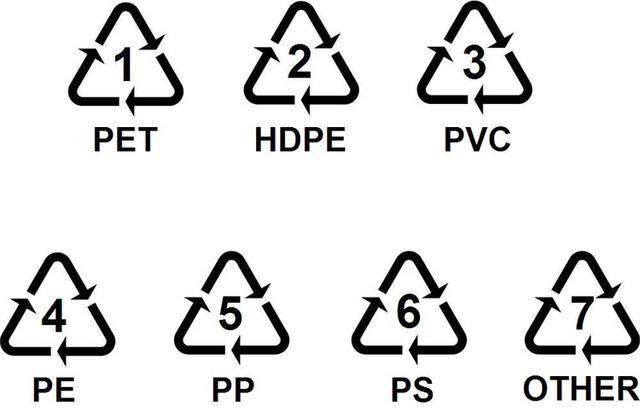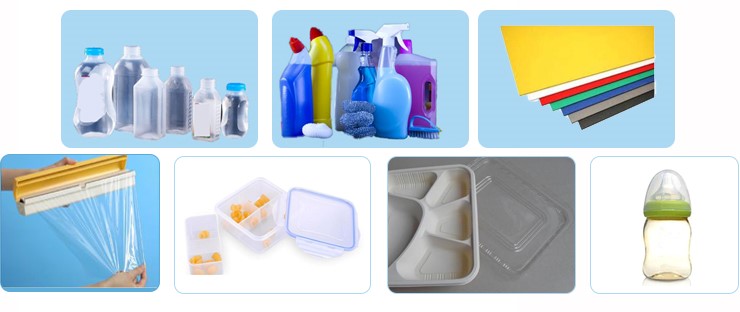How can we identify the recyclable plastics?
Normally, we can see a triangle recycling symbol on some plastic products, which is marked with a number from 1 to 7, as shown in the picture.

These symbols are a set of plastic identification schemes issued by the American Industrial Association (SPI) in 1988. The purpose is to identify the types of plastics and recycle them. As we all known that plastic is made by the chemical industry, many ingredients are harmful to human health, and plastics really indeed make our lives much more convenient, and the plastic product is everywhere. Therefore, it is important to develop corresponding plastic identification schemes.
Now, let us get to know what these symbols represent.
No. 1 PET: Mineral water bottle, carbonated beverage bottle
No. 2 HDPE: Cleaning products, bath products
No. 3 PVC: Currently rarely used in food packaging
No. 4 LDPE: Cling film, plastic film, etc.
No. 5 PP: Microwave oven lunch box, the only plastic box can be placed in the microwave oven.
No.6 PS: Bowls of instant noodle boxes and fast food boxes. Try to avoid packing hot food with fast food boxes.
No. 7 PC: other categories: Kettle, water cup, feeding bottle.
 Have known the usage of different plastics, here are some common questions that help us learn more about the plastic material.
Have known the usage of different plastics, here are some common questions that help us learn more about the plastic material.
1. Can empty beverage bottles be used for oil and vinegar?
There are some fat-soluble molecules in the No. 1 plastic PET. If it is used for daily cooking oil, some substances will penetrate the vegetable oil. Therefore, edible oils are recommended to store in the dark and dark places, and beverage bottles are not the best choice for storing oil and vinegar.
2. Are foods in plastic bags chronically poisoned?
Do not worry too much about chronic poisoning, because whether poisoning depends on the cumulative dissolution of harmful substances. Food packaging is required to meet edible hygiene standards, as long as it meets national quality requirements, there will be no safety issues. We still recommend that to use plastic bags marked with food-grade as much as possible to hold food that will come into direct contact.
3. Can the kettle be placed in the dishwasher?
Do not use a dishwasher to clean the kettle, because the PC material will releases bisphenol-A when heated.
Suggestion on the application of kettle: Before using it for the first time, wash it with baking soda powder and warm water, and dry it naturally at room temperature, because bisphenol-A will be released more in the first time. If the kettle is damaged or broken, it is better to change it, because the surface of the plastic product has micro pits, and it is easy to hide bacteria and avoid repeatedly use aging plastic appliances.




